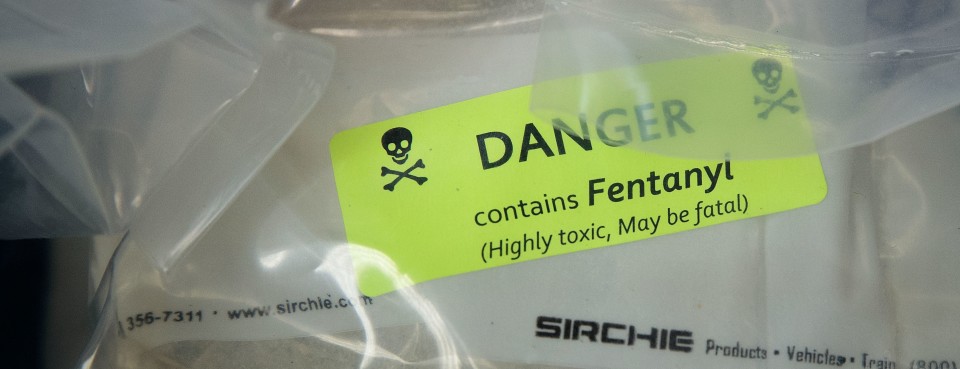
26 Apr Labeling Fentanyl as Mass Weapon May Further Curb Medical Uses
Illegally produced fentanyl is the deadliest opioid when abused but its medical counterpart is a lifeline for people with severe pain. Now a drug that’s been made harder to get may become close to impossible.
The Department of Homeland Security is considering whether to classify fentanyl as a weapon of mass destruction in certain situations, according to a Feb. 22 memo obtained by Task and Purpose. A DHS official wouldn’t confirm if the department is discussing taking this action.
There have already been new restrictions on how much fentanyl can be produced as a result of the focus on opioid abuse, said Ryan Marino, an emergency medicine physician and medical toxicologist at the University of Pittsburgh. Those restrictions include intravenous formulations that hospitals use, which has led to shortages of the drugs and required hospitals to change the way they deliver pain care, he added.
More restrictions on national security grounds could limit surgeries and force doctors to substitute other pain-treatment options that won’t necessarily be as effective.
“There is a large segment of our population in pain that depends on fentanyl,” said Chad Kollas, a palliative-care physician at Orlando Health UF Health Cancer Center.
Fentanyl is one of the most widely used opioids because it has fewer side effects than others, is easy to dose and titrate, and because almost everyone can tolerate it, Marino said. It’s typically used on a continuous infusion for people on ventilators and is one of few options for people in severe pain, he added.
Targeting ‘Right’ Fentanyl
Because the DHS memo doesn’t include details on what types of fentanyl and what quantity would be classified as a WMD, it’s difficult to know if the department is going to distinguish between medical fentanyl and the illegally produced kind that causes so many overdose deaths, said Kate Nicholson, a former attorney with the Justice Department’s Disability Rights Section.
Loss of access to fentanyl for hospitals would shut down surgeries, as most anesthesiologists use fentanyl, said Nicholson, who is now a civil rights attorney advocating for people with disabilities and chronic pain. She serves as co-chair of the Chronic Pain/Opioids Task Force for the National Council on Independent Living.
Matthew Cortland, a disability rights lawyer and advocate, said his health-care team has relied on fentanyl to treat him because he’s allergic to alternatives like dilaudid. He said he is “incredibly worried” how such a policy would affect his treatment.
It would be a “convenient way to look like (the Trump administration is) doing something without actually doing something that would save lives,” Cortland said. He argued it would make more sense to classify analogs of fentanyl, which are more potent and not used in human medicine in the U.S., as a WMD.
Fentanyl has never been used as a WMD, other than in one “highly questionable incident” in Russia in 2002, Marino said. Increasing the availability of Naloxone, the antidote to fentanyl, would help alleviate some of Homeland Security’s concerns about the drug’s potential use as a weapon, Marino said.
Effect of Prescribing Guidelines
The Centers for Disease Control and Prevention put out new opioid prescribing guidelines in 2016 that were intended to re-educate doctors but were “grossly misinterpreted,” leading to patients being tapered off opioids or having a threshold for how much they could be prescribed, said Sally Satel, a psychiatrist and resident scholar at the American Enterprise Institute.
Doctors are afraid to prescribe opioids and see patients who take them as liabilities, major pharmacies restrict how much they’re willing to dispense, and insurance companies will only approve a limited dose, Nicholson said.
The CDC sent a letter in February clarifying that the guidelines weren’t intended to deny opioids for patients with chronic pain, but “doctors are still afraid” of the Drug Enforcement Agency cracking down on over-prescribing, Satel said. Satel added that she is worried that classifying fentanyl as a WMD could lead to similar misinterpretations.
Homeland Security seems to be using national defense as a proxy for a policy that would help stop people from dying while using opioids, said Cortland and Rebecca Cokley, director of the disability justice initiative at the left-leaning Center for American Progress.
“There’s no way it’s gonna stop at fentanyl, it’s just the latest boogeyman,” Cokley said.
[ad_2]
Source link



No Comments